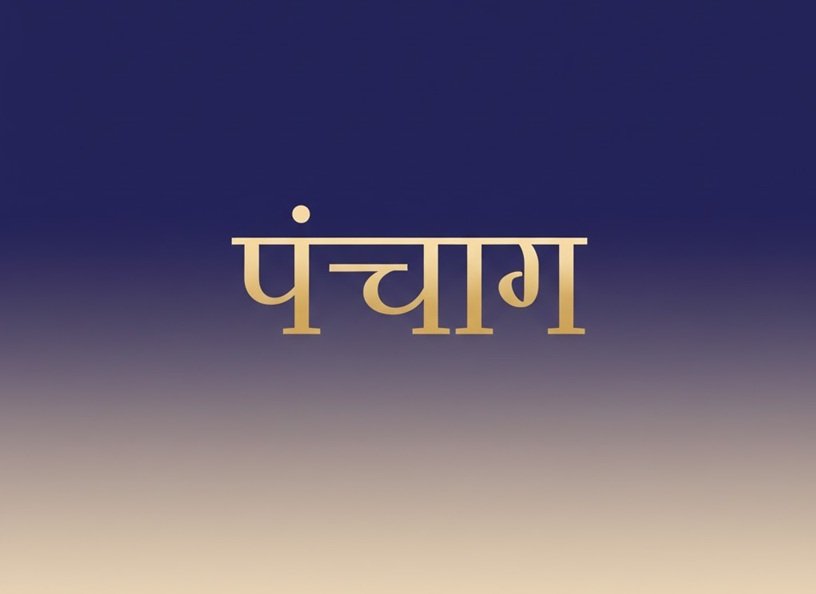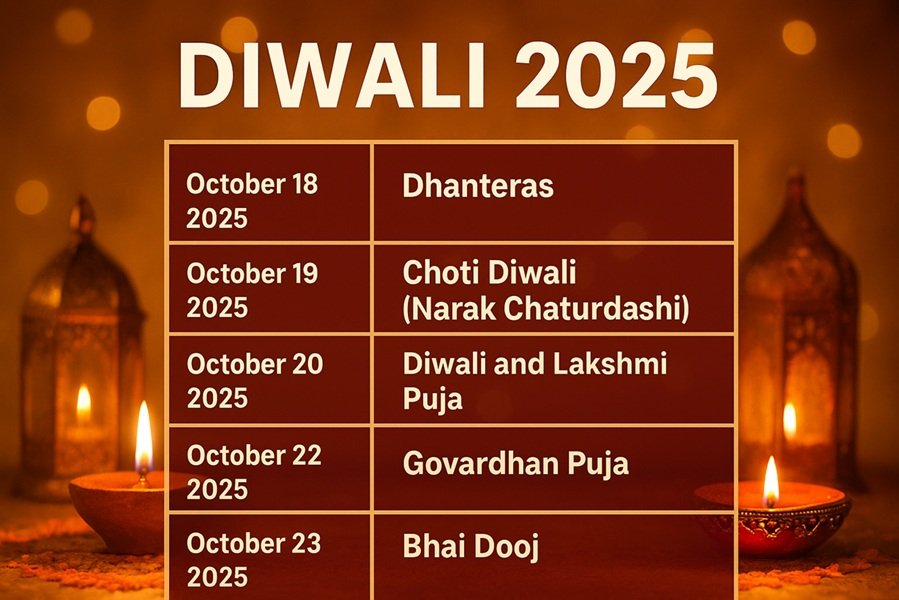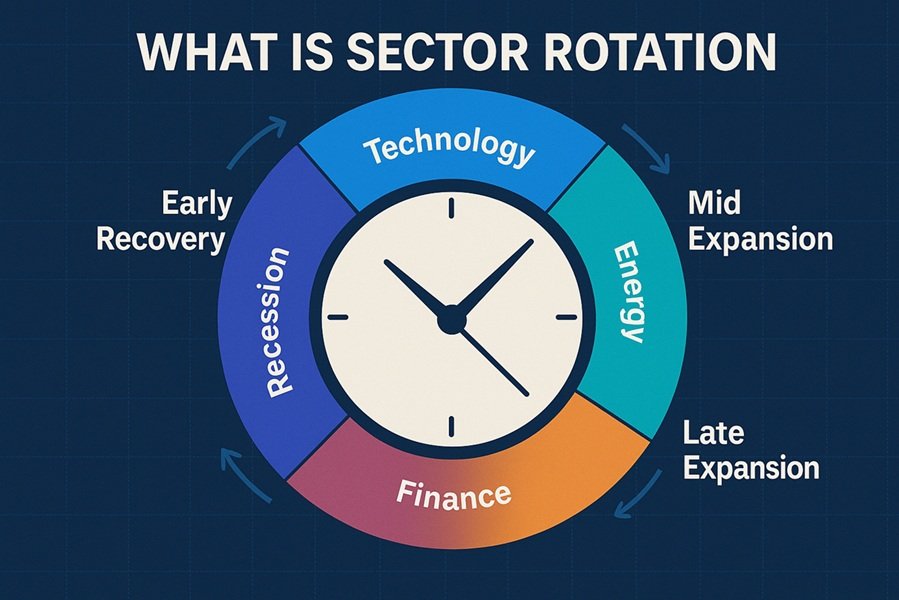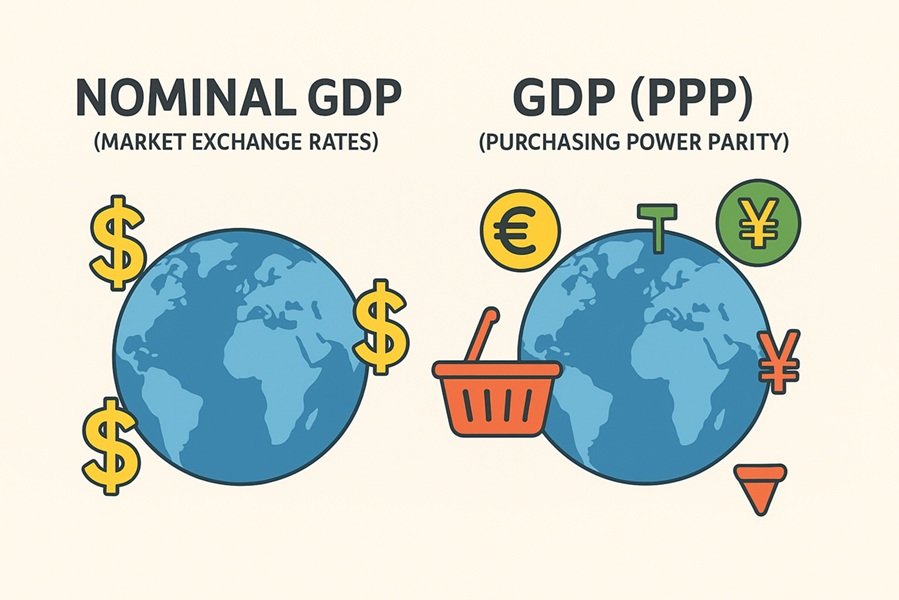
Introduction: The Ancient Science of Time – What Is Panchang?
The Panchang (पंचांग) is the traditional Hindu calendar and almanac, an ancient system that records and predicts celestial movements to guide human life. The term Panchang is derived from two Sanskrit words — Pancha (five) and Anga (limbs or parts) — meaning “five limbs of time”.
Each of these five elements — Tithi, Vara, Nakshatra, Yoga, and Karana — provides vital information about the cosmic energies influencing the Earth at any given moment. Together, they help determine Muhurta (auspicious timing) for various activities like marriage, housewarming, business openings, festivals, and spiritual rituals.
Read This: Samvatsara Names: The 60-Year Cycle in Vedic Astrology Explained
The Purpose of Panchang in Vedic Life
For thousands of years, the Panchang has been a spiritual and scientific guide for daily living.
It is not merely a calendar but a celestial map, reflecting the dynamic relationship between the Sun, Moon, and planetary bodies.
Astrologers, priests, and even common people refer to the Panchang daily to:
- Plan religious ceremonies
- Choose favorable times for travel or business
- Avoid inauspicious periods (like Rahu Kaal or Yamaganda Kaal)
- Understand daily planetary influences
In essence, the Panchang is the heartbeat of Hindu timekeeping, combining astronomy, astrology, and spirituality.
The Five Elements (Panchang’s “Five Limbs”)
Let us now explore each of the five elements of the Panchang in detail.
1. Tithi (Lunar Day)
Definition:
Tithi represents the lunar day — the time it takes for the Moon to gain 12° in its angular distance from the Sun.
There are 30 Tithis in a lunar month:
- 15 in Shukla Paksha (waxing phase of the Moon)
- 15 in Krishna Paksha (waning phase of the Moon)
Each Tithi is associated with specific energies, deities, and rituals. For instance:
- Ekadashi is ideal for fasting and spiritual growth.
- Purnima (Full Moon) is auspicious for worship and charity.
- Amavasya (New Moon) is for ancestor offerings (Pitru Tarpan).
Classification of Tithis:
- Nanda Tithi – Joy and prosperity (Pratipada, Shashthi, Ekadashi)
- Bhadra Tithi – Auspicious beginnings (Dwithiya, Saptami, Dwadashi)
- Jaya Tithi – Victory and success (Tritiya, Ashtami, Trayodashi)
- Rikta Tithi – Emptiness, avoid new tasks (Chaturthi, Navami, Chaturdashi)
- Poorna Tithi – Fulfillment (Panchami, Dashami, Purnima/Amavasya)
2. Vara (Day of the Week)
Definition:
Vara simply refers to the weekday, governed by one of the seven major planetary deities (Grahas).
| Day (Vara) | Planet (Graha) | Significance |
|---|---|---|
| Sunday (Ravivara) | Sun (Surya) | Vitality, authority, government work |
| Monday (Somavara) | Moon (Chandra) | Calmness, emotional balance, devotion |
| Tuesday (Mangalavara) | Mars (Mangala) | Courage, action, avoid conflicts |
| Wednesday (Budhavara) | Mercury (Budha) | Intelligence, communication |
| Thursday (Guruvara) | Jupiter (Guru) | Wisdom, spiritual work, teaching |
| Friday (Shukravara) | Venus (Shukra) | Love, beauty, prosperity |
| Saturday (Shanivara) | Saturn (Shani) | Discipline, karmic lessons, humility |
Each Vara has both auspicious and challenging energies, depending on the planetary alignment in one’s horoscope.
3. Nakshatra (Lunar Constellation)
Definition:
Nakshatra means “that which doesn’t decay”. It represents the 27 divisions of the zodiac (each of 13°20’), through which the Moon passes during its 27.3-day journey around Earth.
Each Nakshatra has its own ruler, deity, and character traits, influencing human emotions and outcomes.
For example:
- Ashwini Nakshatra – Healing and swift beginnings
- Rohini Nakshatra – Creativity and beauty
- Magha Nakshatra – Honor, ancestral blessings
- Purva Phalguni – Love, arts, luxury
- Mula Nakshatra – Depth, transformation
- Revati Nakshatra – Protection, compassion
Nakshatras are key in determining birth charts, compatibility (Kundali Milan), and auspicious timings (Nakshatra Muhurat).
4. Yoga (Sun-Moon Combination)
Definition:
In Panchang, Yoga is the sum of the longitudes of the Sun and the Moon, divided into 27 equal parts (each of 13°20’). There are 27 Nitya Yogas, such as Vishkumbha, Preeti, Ayushman, Saubhagya, Siddhi, etc.
Each Yoga has a specific impact on human behavior and activities:
- Saubhagya Yoga – Luck, prosperity
- Siddhi Yoga – Success and accomplishment
- Vajra Yoga – Strength and determination
- Vyatipata Yoga – Unexpected events or disruptions
- Shubha Yoga – Auspicious outcomes
🔹 Note: There is also another system of 60 Anandadi Yogas, which expands on these influences (see related article: Anandadi Yoga Names and Meanings).
5. Karana (Half of a Tithi)
Definition:
A Karana is half of a Tithi — i.e., the time in which the Moon gains 6° in its angular distance from the Sun. There are 11 Karanas, classified as:
- Fixed (Sthira): Shakuni, Chatushpada, Naga, Kimstughna
- Movable (Char): Bava, Balava, Kaulava, Taitila, Garaja, Vanija, Vishti (Bhadra)
Each Karana influences the energy of the hour:
- Bava, Balava – Good for starting new projects
- Taitila, Garaja, Vanija – Favorable for business or travel
- Vishti (Bhadra) – Inauspicious; avoid important work
Together, two Karanas complete one Tithi, emphasizing the granular accuracy of the Panchang.
Additional Panchang Components
Besides the five main elements, the Panchang often includes:
- Rahu Kaal, Gulika Kaal, and Yamaganda – Inauspicious time periods of the day
- Sunrise and Sunset timings – For daily rituals
- Moonrise and Moonset – For fasting and festival calculations
- Paksha (Fortnight) and Masa (Month) – For festival alignment
How the Panchang Determines Auspicious Muhurta
When choosing a Muhurta (favorable moment), astrologers analyze:
- Tithi – Should be auspicious and full of energy
- Vara – Preferable according to activity
- Nakshatra – Harmonious with the person’s birth Nakshatra
- Yoga – Should be Shubha or Siddhi
- Karana – Preferably movable or stable, not Bhadra
For example:
- Marriage Muhurta: During Shubha Yoga, Saubhagya Yoga, or Kalyana Yoga
- Griha Pravesh: During Vajra, Saubhagya, or Vardhamana Yoga
- Business Start: On Guruvara (Thursday) with Siddhi Yoga or Vishkumbha Yoga
This process ensures the alignment of human intention with divine cosmic timing.
Scientific and Spiritual Perspective
While rooted in ancient traditions, Panchang calculations are astronomically precise — based on the Sun and Moon’s geocentric positions. Modern astronomers have confirmed the accuracy of planetary data used in classical texts like Surya Siddhanta.
Spiritually, the Panchang teaches us to live in rhythm with the cosmos — understanding that each day carries unique vibrations that can either support or challenge our actions.
Panchang Across Indian Regions
Different regions of India use distinct versions of Panchang, though all follow the same five elements:
- North India: Vikram Samvat
- South India: Tamil, Telugu, Kannada Panchangam (Ugadi system)
- Maharashtra & Gujarat: Shaka Samvat (official Indian national calendar)
- Kerala: Kollavarsham
Despite local variations, the principles of Panchang remain universally consistent across the Hindu world.
Conclusion: Panchang as the Cosmic Clock
The Panchang is much more than a calendar — it is a cosmic clock, synchronizing human actions with celestial rhythms. It reveals the divine mathematics of time, reminding us that every moment has its own destiny.
By understanding Panchang and its five limbs — Tithi, Vara, Nakshatra, Yoga, and Karana — we can plan our lives harmoniously, enhance our success, and remain attuned to universal order (Rta).








